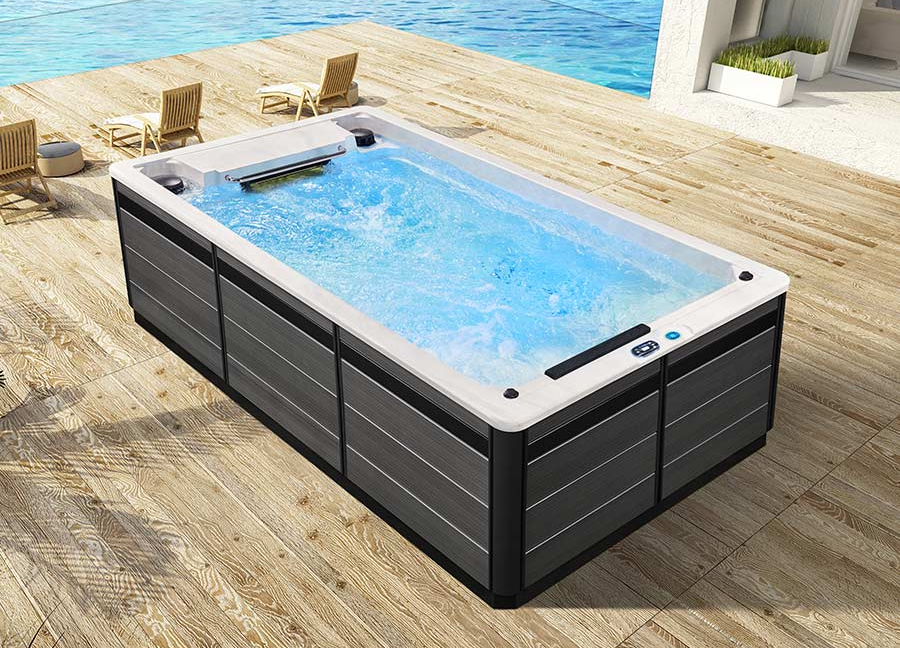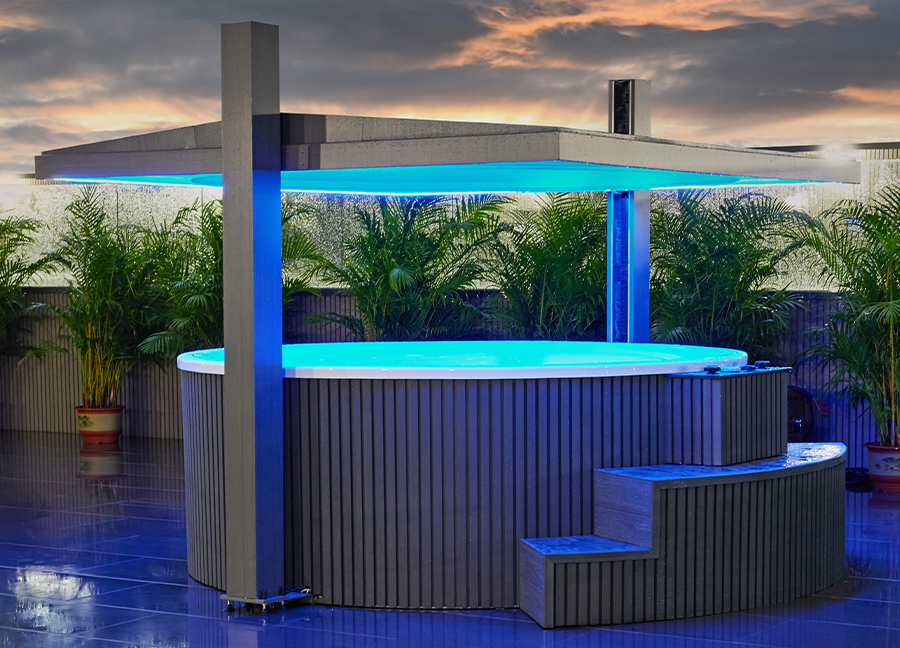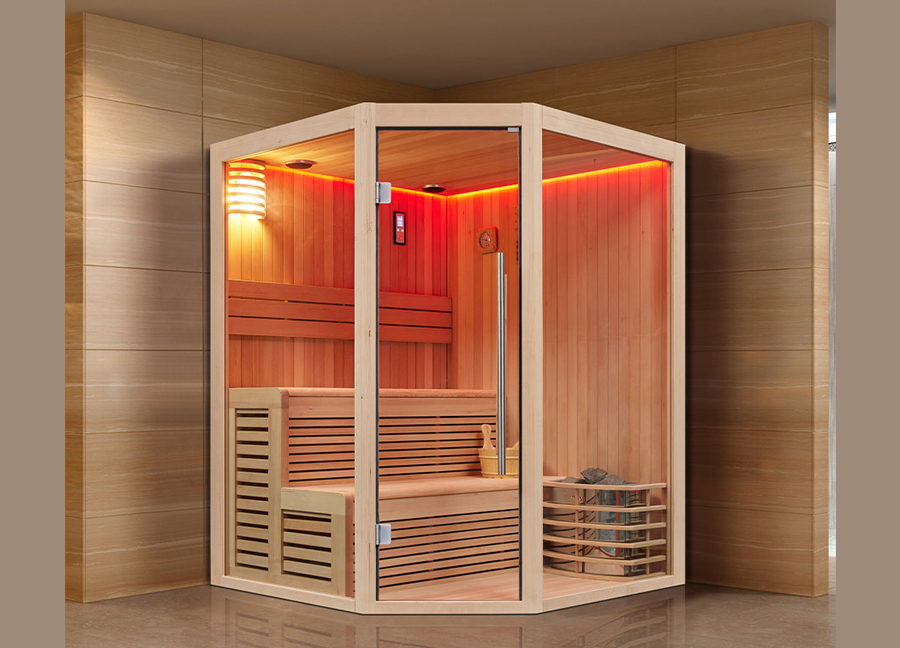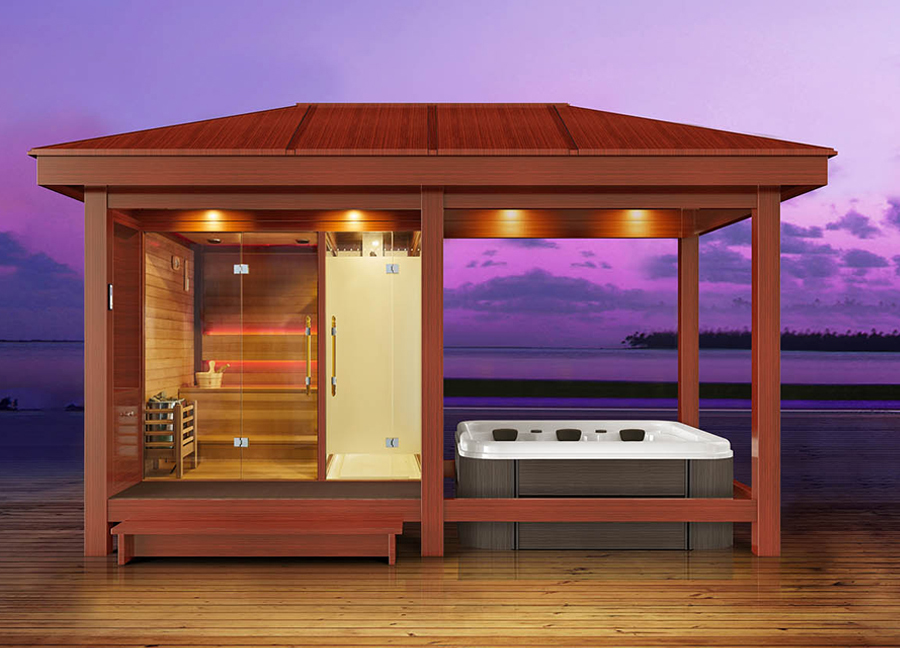"Can I use an outdoor steam sauna room in winter?" This is a question many sauna enthusiasts often ask in the cold season. Compared to summer, the winter environment is characterized by lower temperatures, dryness, and shorter days and longer nights. However, an outdoor steam sauna is a self-contained structure with high temperatures and high humidity, creating a stark contrast between the two.
This contrast has led many users to harbor concerns, even worrying about health risks or damaging the performance of the equipment. In reality, it is perfectly acceptable to use an outdoor steam sauna in winter. However, it is important to pay close attention to the ambient temperature and the human body's adaptability, and to ensure proper operation of the equipment itself.
This article will explore this topic in depth from five perspectives: physiological adaptability, safety, operating requirements, precautions, and equipment maintenance, striving to comprehensively address this question in a scientific and rigorous manner.
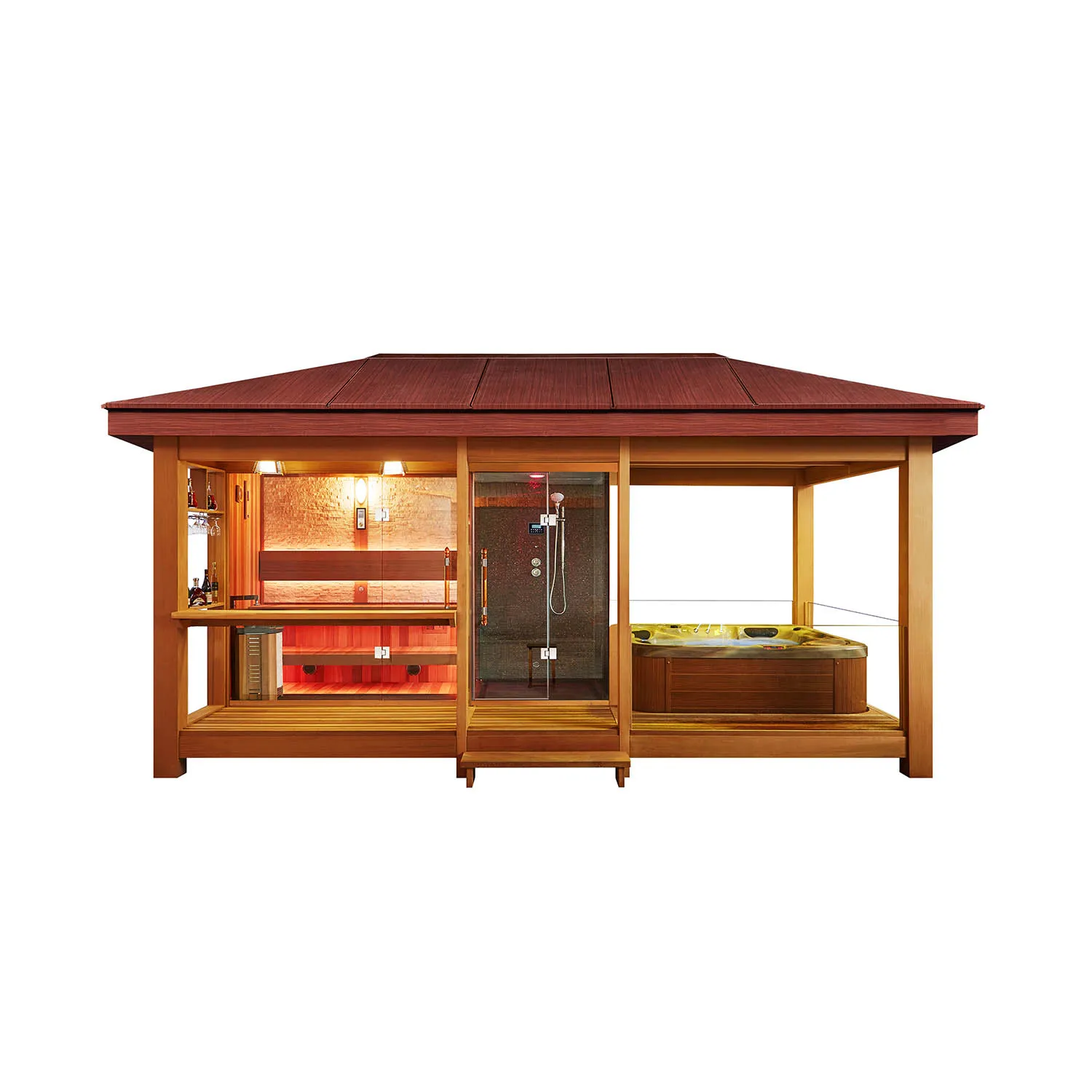
What is an outdoor steam sauna?
Before discussing the feasibility of using an outdoor steam sauna in winter, it is important to first have a clear understanding of the structure and function of the "outdoor steam sauna" equipment.
1. Steam Sauna Room Construction
An outdoor steam sauna room is an enclosed steam room installed outdoors. Typical features include:
· Shell Material: Typically made of preservative wood, insulation panels, and glass doors, providing excellent thermal insulation.
· Airtightness: The space is well sealed to minimize heat and moisture loss.
· Steam Generation System: Equipped with a steam generator that produces large amounts of moist, hot steam by heating water.
· Temperature Control System: Supports setting a fixed temperature range (commonly 40°C to 60°C).
· Seating, lighting, and control panels: Provide user comfort and safety.
2. Purpose of Using a Steam Sauna Room
· Relaxes muscles and relieves fatigue.
· Improves blood circulation.
· Stimulates skin metabolism.
· Aids in eliminating metabolic waste through perspiration.
These features are particularly popular in winter, leading more and more users to consider using outdoor steam sauna rooms during the colder months.
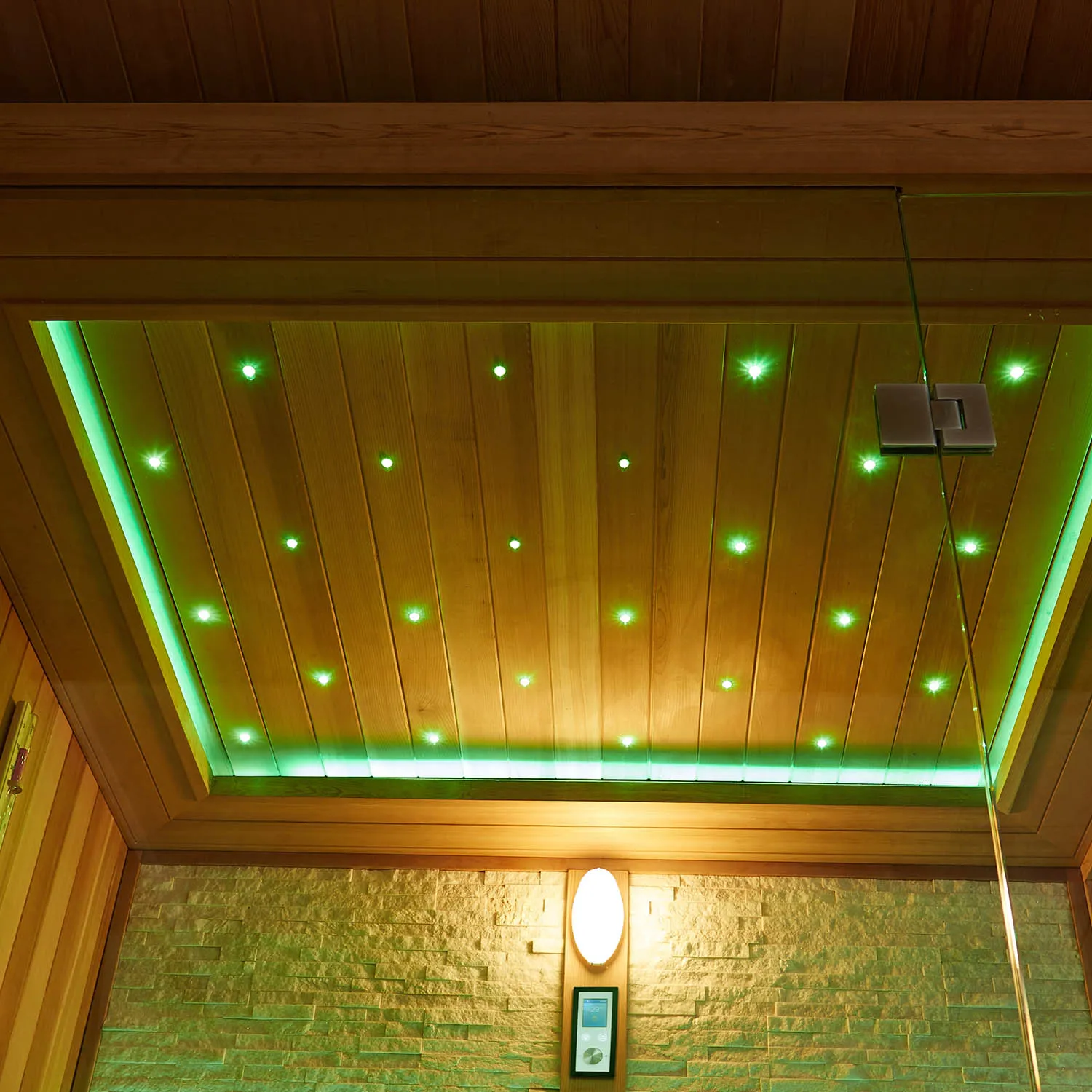
Feasibility Analysis of Using an Outdoor Steam Sauna Room in Winter
1. Equipment Design Meets Year-Round Operation
Modern outdoor steam sauna room designs typically consider a variety of environmental adaptability considerations:
· Materials with excellent thermal insulation and frost resistance;
· Electric heating systems capable of stable operation in low-temperature environments;
· Steam generators with automatic temperature control, water supply, and wastewater drainage, providing frost protection;
· Confined spaces can quickly heat up, creating a warm and comfortable internal environment;
· The control panel is often moisture- and cold-resistant.
Conclusion: The equipment structure and operating mechanism are fully suitable for winter use.
2. The human body has a well-developed adaptation mechanism to alternating hot and cold temperatures
A common question regarding using an outdoor steam sauna room in winter is: Is alternating hot and cold temperatures harmful to the body? In fact, moderate alternations of hot and cold have the following benefits for the body:
· Stimulate blood vessel elasticity: Steam dilates blood vessels, while the cold air from the cabin constricts them, helping to strengthen them;
· Boost immunity: Helps the immune system cope with temperature fluctuations and improves cold tolerance;
· Stimulate sympathetic nerve activity: Helps regulate the body's ability to adapt to environmental changes;
· Perspiration and detoxification: Cold weather naturally reduces the chance of sweating, and saunas complement this physiological need.
Of course, these benefits only occur when used in a controlled, measured, and appropriate manner.
Key Considerations for Using an Outdoor Steam Sauna Room in Winter
To ensure safety, comfort, and health, pay special attention to the following details when using an outdoor steam sauna room in winter.
1. Ensure normal operation and frost protection of the equipment
In cold weather, the equipment's steam and water systems are more susceptible to damage. The following aspects require attention:
· Water supply system frost protection: Water pipes should be wrapped with insulation to prevent freezing at night.
· Steam generator maintenance: Ensure the automatic drain function is functioning properly to prevent residual water from freezing.
· Increased preheating time: The lower the ambient temperature, the longer the warm-up time, so the equipment should be opened earlier.
· Cabin seal inspection: Ensure doors and windows are tightly closed to prevent heat loss.
2. Control usage time and temperature
While using a sauna in winter is comfortable, avoid excessive use and excessive heat:
· 10-15 minutes is recommended for beginners.
· 20 minutes is recommended for experienced users.
· Maintain an indoor temperature between 45°C and 55°C, with a humidity level of approximately 80% to 100%.
· Avoid prolonged exposure to the elements during extreme cold snaps (e.g., temperatures below -10°C) to prevent colds or frostbite.
3. Staying warm and recovering after leaving the sauna is crucial
The most dangerous time to use an outdoor steam sauna in winter isn't during the session, but after leaving:
· Prepare warm clothing (bathrobe, towel, cotton slippers) before leaving the sauna.
· Immediately wrap yourself up after leaving the sauna to prevent sudden heat loss.
· Avoid spending extended periods outdoors and return directly to the sauna.
· If alternating hot and cold temperatures (such as cold showers) are used, do so under professional supervision.
4. Maintaining a healthy diet and hydration regime is crucial
· Avoid fasting or overeating before and after sauna use.
· Drink 200-300ml of water one hour before use to replenish fluids.
· Continue to hydrate after use to prevent dehydration and electrolyte loss.
· Avoid alcoholic or caffeinated beverages to prevent excessive vasodilation.
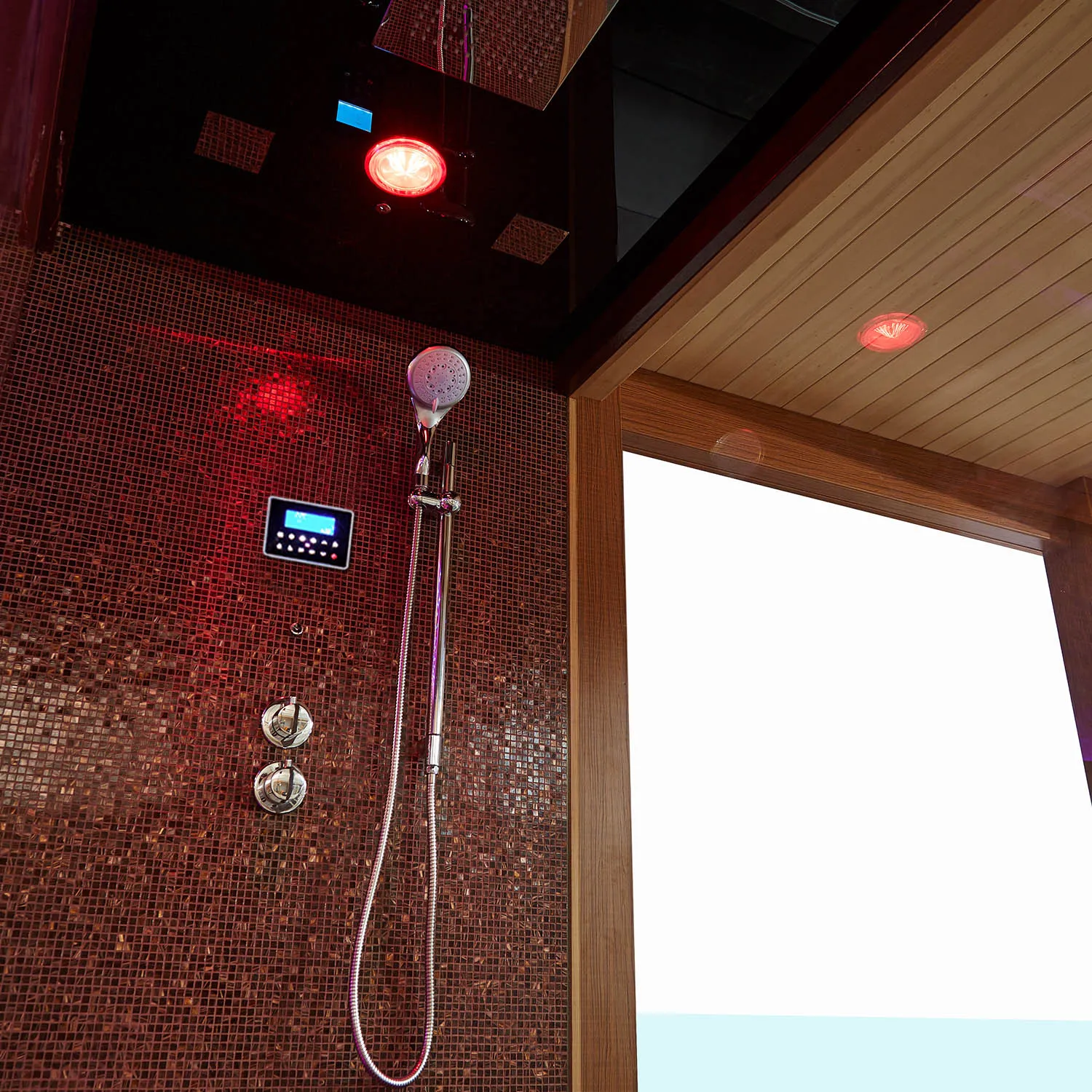
Recommendations for Special Groups Using Outdoor Steam Saunas in Winter
Not everyone is suitable for using an outdoor steam sauna in winter. The following are some precautions for different groups:
1. Elderly
· Reduced vascular elasticity makes it more likely that cardiovascular events will occur due to alternating temperatures.
· Recommended use time is halved (approximately 10 minutes).
· A family member should accompany the sauna after exiting the sauna to prevent falls and hypothermia.
2. Individuals with Cardiovascular Diseases
· Self-use is not recommended and requires medical evaluation.
· Alternating temperatures may cause blood pressure fluctuations.
· If permitted, a person must accompany the sauna at all times and monitor blood pressure.
3. Children and Adolescents
· Adolescents may experience a short session accompanied by a parent.
· Children have delicate skin and are advised not to use a steam sauna, especially in cold weather.
4. Women and Pregnant Women
· Pregnant women should avoid using a sauna as steam may cause uterine contractions and blood pressure fluctuations.
· If menstruating women use a sauna, they should limit their time and ensure that the room is well ventilated and clean.
Maintenance and Winterization Strategies for Outdoor Steam Sauna Rooms
To ensure safe and stable operation of equipment in winter, a maintenance strategy is crucial.
1. Structural Insulation
·Exterior wall panels should be made of high-density winter-proof material;
·Door and window gaps should be regularly inspected for tightness;
·Insulation can be added to the floor to prevent heat loss from the bottom.
2. Freeze Protection for Steam Equipment
·Install in a temperature-controlled room or equip with a winter cover;
·Use the freeze protection function to automatically drain excess water;
·Ensure unobstructed drainage to prevent accumulated water from freezing.
3. Regular Inspection and Maintenance
·Clean and disinfect after each use;
·Inspect the steam generator's operating status monthly;
·The water supply system, filter element, and electrical circuits require regular maintenance and replacement.

Can outdoor steam sauna rooms be used in winter?
It is completely safe to use outdoor steam sauna rooms in winter. The prerequisites are:
1. The equipment is properly designed and in good operating condition;
2. Time, temperature, and physical condition are strictly controlled during use;
3. Comprehensive warming measures are in place when leaving the room;
4. Special groups should use the equipment under medical advice or avoid use;
5. Maintenance and cold-weather protection measures are in place.
If these conditions are met, an outdoor steam sauna room will not only not pose a health risk, but will actually provide significant physical relief, metabolic stimulation, and psychological relaxation, making it a rare warming experience during the cold winter months.
What’s the Production Time and What If I Need Custom Changes?
The standard production lead time for products like steam sauna rooms, swim spas, or massage bathtubs is around 35 days, covering design, molding, assembly, and testing. If you request any changes during production, timelines may be reset or extended accordingly.
As a professional manufacturer, we’re equipped to handle rapid customization without compromising quality. We recommend confirming specifications early to lock in your preferred schedule and discounted rates on bulk purchasing.

